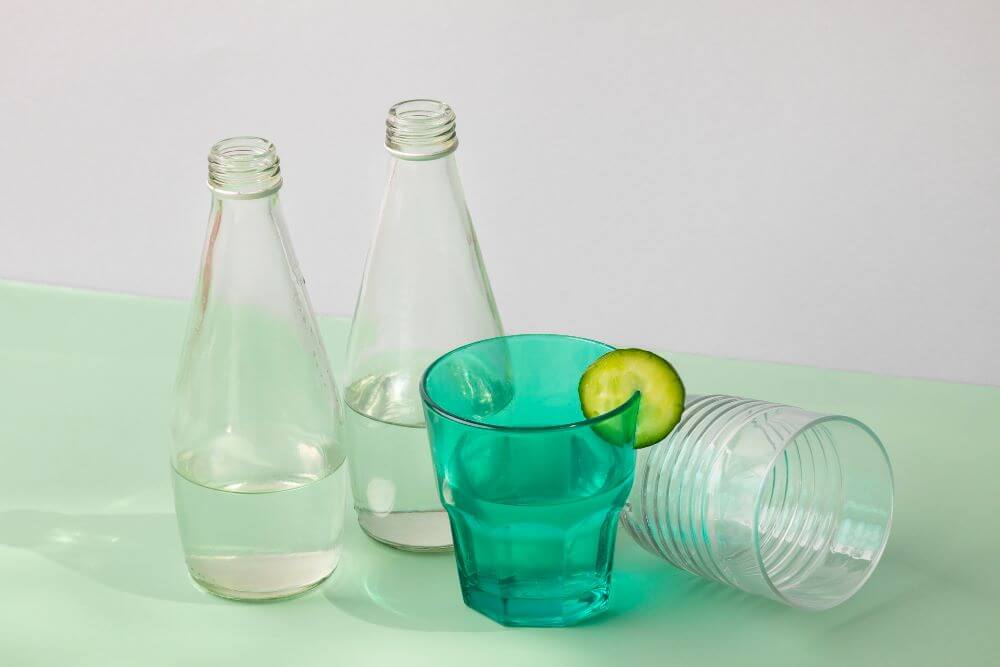Deciding on the right packaging for your product is a huge decision. It’s the first thing a customer sees, a key part of your brand identity, and a practical container that needs to protect what’s inside. Two of the most established players in this arena are glass and plastic. Each brings a unique set of strengths to the table, and the choice between them can define your product’s market position, logistical efficiency, and environmental story.
For businesses, this isn’t just about aesthetics; it’s a strategic choice that impacts everything from production costs to consumer perception. As the packaging industry continues to innovate, both materials are evolving in exciting ways, offering advanced solutions that meet the demands for performance, appeal, and sustainability.
This guide will explore the distinct advantages of both glass and plastic packaging. We’ll look at where each material shines, how they are being innovated, and how they fit into a sustainable business model, helping you make a more informed choice for your brand.
The Enduring Appeal of Glass Bottle Packaging
Glass has been a trusted packaging material for centuries, and for good reason. Its premium look and feel can instantly elevate a product, signalling quality and purity to the consumer. For brands in the food, beverage, and cosmetic industries, glass bottle packaging is often the go-to choice for creating a high-end image.
Key Benefits for Businesses:
- Brand Perception: Glass has an inherent premium quality. Its weight, clarity, and texture convey luxury and trustworthiness, which can justify a higher price point for your products.
- Product Integrity: As an inert material, glass doesn’t react with its contents. This means it won’t alter the taste, smell, or composition of your product, ensuring it reaches the customer exactly as intended.
- Versatility in Design: Modern manufacturing allows for glass to be moulded into a vast array of shapes and sizes. From bespoke bottles to cosmetic jars, you can create unique packaging that stands out on the shelf. Colouring options, from classic amber and green to vibrant blues, also provide UV protection while enhancing brand identity.
Driving Innovation in Glass
The world of glass packaging is far from static. Manufacturers are constantly pushing the boundaries to make glass lighter, stronger, and more sustainable. Lightweighting technology, for example, reduces the amount of material needed per bottle without compromising on strength. This not only lowers raw material costs but also reduces transportation weight and associated carbon emissions.
Furthermore, advancements in digital printing on glass allow for intricate, high-quality designs to be applied directly to the bottle. This eliminates the need for labels and creates a seamless, premium finish that captures consumer attention.
The Case for Plastic Bottle Packaging
Plastic packaging is a cornerstone of the modern supply chain, prized for its incredible versatility, durability, and cost-effectiveness. For many businesses, particularly in the fast-moving consumer goods (FMCG) sector, plastic bottle packaging offers an unbeatable combination of performance and economic sense.
Key Benefits for Businesses:
- Cost and Efficiency: Plastic is generally cheaper to produce and transport than glass. Its lightweight nature significantly reduces shipping costs and the overall carbon footprint of your logistics operation. This makes it an ideal choice for high-volume products.
- Durability and Safety: Unlike glass, plastic is shatter-resistant. This is a major advantage in terms of safety during production, transit, and consumer handling. For e-commerce brands, this resilience can lead to fewer breakages and returns.
- Unmatched Design Flexibility: Plastic can be moulded into virtually any shape imaginable, allowing for innovative and ergonomic designs that improve the user experience. Features like integrated handles, easy-squeeze functions, and complex closures are all readily achievable with plastic.
Innovation and Sustainability in Plastics
The plastics industry is heavily invested in innovation, with a strong focus on sustainability. The development of recycled PET (rPET) is a game-changer, allowing businesses to create plastic bottle packaging from post-consumer waste. Many brands now proudly advertise their use of 100% rPET, aligning with consumer demand for more sustainable products.
Beyond recycling, advancements are being made in plant-based plastics (bioplastics) and chemical recycling, which can break down plastics into their original monomers to create new polymers. These innovations are paving the way for a more circular economy for plastic packaging, where waste is minimised and resources are reused.
Making the Right Choice for Your Product
Both glass and plastic offer compelling advantages for businesses. Glass brings a sense of premium quality and absolute product purity, backed by a well-established recycling infrastructure. Plastic provides unmatched practicality, cost-efficiency, and design freedom, with a rapidly innovating sustainability profile.
The best choice depends entirely on your product, brand positioning, and supply chain. A luxury perfume might be perfectly suited to an elegant glass bottle, while a bottle of moisturiser benefits from the safety and light weight of plastic. By understanding the unique strengths of each material, you can select the packaging that not only protects your product but also powerfully communicates your brand’s values.















